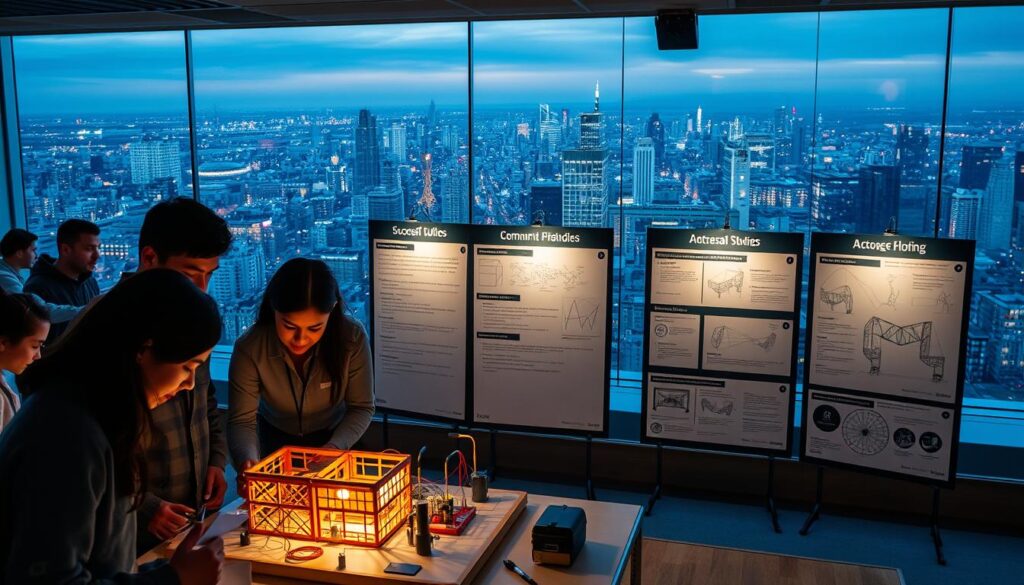Community-centered engineering projects are transforming lives by providing innovative solutions to real-world problems. According to Samuel Bechara, community service-based senior design projects enable students to apply their knowledge to make a tangible difference in society.
These successful community-driven projects not only benefit the community but also offer students valuable hands-on experience. By exploring inspiring engineering case studies, we can understand the impact of community-centered engineering on society.
Key Takeaways
- Community-centered engineering projects drive positive change.
- Students gain practical experience through community service-based projects.
- Engineering case studies highlight the success of community-driven initiatives.
- Community-centered engineering has a significant societal impact.
- Innovative solutions are developed through collaborative efforts.
Understanding Community-Centered Engineering
As the world grapples with complex challenges, community-centered engineering emerges as a critical approach to sustainable development. This methodology prioritizes the needs and involvement of local communities in the engineering process, ensuring that projects are not only technically sound but also socially and environmentally beneficial.
Defining Community-Centered Engineering
Community-centered engineering is an approach that integrates the perspectives and needs of the community into every phase of a project, from planning to implementation. It involves collaborative efforts between engineers, local stakeholders, and community members to develop solutions that are tailored to the specific context.
For instance, the Resources to Inspire Successful Engineers (RISE) Program at the University of Delaware has been empowering students to succeed since 1972. This program is a prime example of community-centered engineering in action, as it focuses on supporting underrepresented students in engineering through mentorship and resources.
Importance in Today’s World
In today’s world, where infrastructure and development projects have significant impacts on communities and the environment, community-centered engineering plays a crucial role. It ensures that projects are sustainable, equitable, and responsive to community needs, thereby enhancing their overall success and acceptance.
| Key Aspects | Description | Benefits |
|---|---|---|
| Community Involvement | Active participation of local communities in project planning and execution. | Increased project acceptance and sustainability. |
| Sustainable Practices | Use of environmentally friendly materials and practices. | Reduced environmental impact and enhanced eco-friendliness. |
| Local Resource Utilization | Maximizing the use of local resources, including labor and materials. | Boosts local economy and reduces project costs. |
The importance of community-centered engineering is further underscored by its potential to drive positive social change. By engaging communities in the engineering process, projects can be designed to address specific social issues, such as accessibility and affordability, thereby contributing to more equitable outcomes.
Key Components of Successful Projects
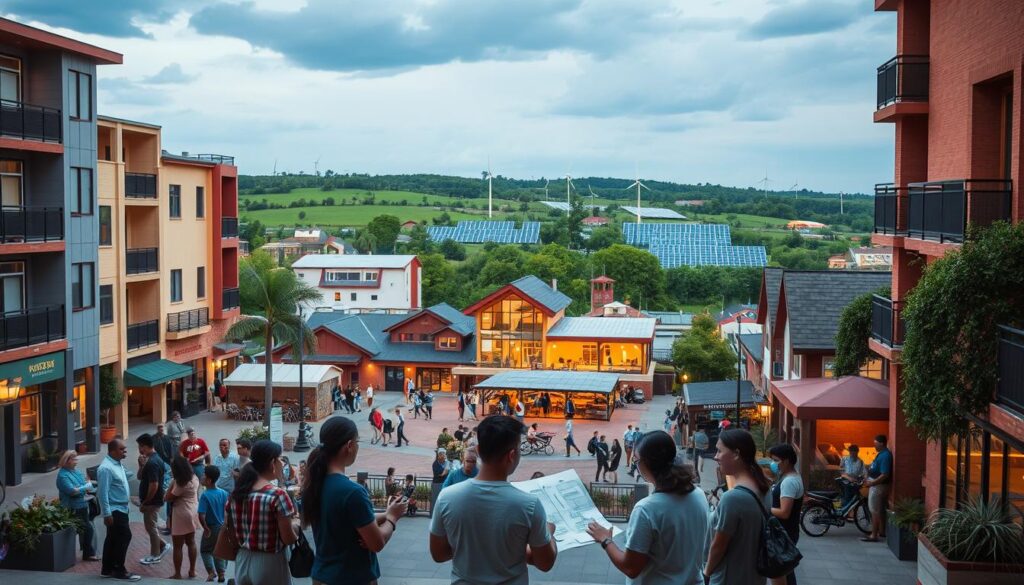
The success of community-centered engineering projects hinges on several critical elements that work together seamlessly. As highlighted by the Clark Scholars Program, fostering a collaborative community is crucial for the success of such initiatives. Collaboration is not just a buzzword; it’s a fundamental component that ensures projects are tailored to the needs of the community.
Collaboration with Local Stakeholders
Engaging with local stakeholders is vital for the success of community-centered engineering projects. This involves not just informing the community about the project, but actively listening to their needs and incorporating their feedback into the project design. As noted in a study on community engagement, “effective community engagement is a critical factor in the success of infrastructure projects” community engagement study. By doing so, projects can better address the community’s needs, leading to more sustainable outcomes.
Sustainable Practices
Sustainable practices are another key component of successful community-centered engineering projects. This includes using materials and techniques that minimize environmental impact, reduce waste, and promote energy efficiency. Sustainability is not just about environmental concerns; it’s also about ensuring that the project is economically viable and socially acceptable.
Utilizing Local Resources
Utilizing local resources is essential for the long-term success of community-centered engineering projects. This can include using local materials, labor, and expertise. By doing so, projects can stimulate local economies and ensure that the community has the capacity to maintain and adapt the project over time. As
“the use of local resources can significantly enhance the sustainability and resilience of community projects”
, highlighting the importance of this component.
Case Study: The High Line, New York City
The High Line in New York City is a paradigmatic example of community-centered engineering. This elevated park, built on an abandoned rail line, has become a model for urban renewal projects worldwide.
Overview of the Project
The High Line was originally constructed in the 1930s to serve the city’s industrial needs. After falling into disuse, it was slated for demolition. However, through the efforts of local residents and community groups, the rail line was repurposed into a public park, opening in 2009.
This transformation was not just physical but also symbolic, turning a neglected infrastructure into a vibrant public space that reflects the community’s character and needs.
Community Involvement
A key factor in The High Line’s success was the extensive community involvement throughout its development. Public meetings, surveys, and workshops were conducted to gather input from local residents, businesses, and stakeholders.
This inclusive approach ensured that the final design was a true representation of the community’s vision, incorporating elements that were meaningful and beneficial to the local population.
Design and Impact
The design of The High Line was innovative, featuring native plant species, public art installations, and spaces for recreation and relaxation. The park has had a significant impact on the surrounding area, spurring economic development and enhancing the quality of life for local residents.
The High Line serves as a success story in community-centered engineering, demonstrating how infrastructure projects can be transformed to meet community needs and foster a sense of place and identity.
Case Study: Detroit Collaborative Design Center
![]()
Through its innovative approach, the Detroit Collaborative Design Center has become a model for successful community-driven projects nationwide. This center has been pivotal in demonstrating how community-centered engineering can lead to transformative outcomes.
Goals and Vision
The Detroit Collaborative Design Center was established with a clear vision to foster community development through collaborative design practices. Its primary goal was to engage local communities in the design process, ensuring that the solutions developed were tailored to the specific needs and aspirations of the community.
As noted by a prominent figure in community-centered engineering, “The future of our cities depends on our ability to listen to and work with the communities that inhabit them.” This quote encapsulates the center’s commitment to community-focused initiatives.
Community Workshops
A key component of the center’s approach was the organization of community workshops. These workshops provided a platform for local residents to share their ideas and concerns, which were then incorporated into the design process. This collaborative approach not only empowered the community but also ensured that the projects were grounded in the community’s needs.
- Workshops were conducted in accessible, community-friendly locations.
- Local stakeholders were actively involved in the planning and execution phases.
- The feedback collected during these workshops was instrumental in shaping the final designs.
Outcomes and Successes
The outcomes of the Detroit Collaborative Design Center’s initiatives have been noteworthy. The center’s projects have contributed to the revitalization of neighborhoods, enhanced community engagement, and served as engineering case studies for future community-centered projects.
“The Detroit Collaborative Design Center’s work is a testament to the power of community-centered design. Their projects have not only beautified our city but have also brought our community closer together.”
The success of the Detroit Collaborative Design Center serves as a compelling example of community-focused engineering success stories, highlighting the potential for positive change when community needs are placed at the forefront of engineering projects.
Case Study: Santa Fe Community Convention Center
The Santa Fe Community Convention Center stands as a testament to successful community-centered engineering. This project has not only revitalized the local community but has also served as a model for future developments.
Planning and Development
The planning and development phase of the Santa Fe Community Convention Center involved extensive collaboration with local stakeholders. Community input was prioritized to ensure that the project met the needs and expectations of the local population.
- Public forums were held to gather feedback and suggestions.
- A community advisory board was established to guide the development process.
- Local businesses were engaged to participate in the project’s economic benefits.
Engaging Local Voices
Engaging local voices was a critical component of the project’s success. By involving the community in the decision-making process, the project team was able to tailor the development to the community’s needs.
- Surveys and interviews were conducted to understand community preferences.
- Workshops were organized to brainstorm ideas and solutions.
- Regular updates were provided to keep the community informed.
Economic and Social Benefits
The Santa Fe Community Convention Center has delivered significant economic and social benefits to the local community. The project has created jobs and stimulated local economic growth.
- The convention center has attracted new businesses and events to the area.
- Local residents have benefited from increased tourism and economic activity.
- The project has enhanced the community’s quality of life by providing new public spaces.
In conclusion, the Santa Fe Community Convention Center is a shining example of community-centered engineering in action. Its success underscores the importance of engaging with local communities and prioritizing their needs in project development.
Case Study: Portland’s EcoDistricts
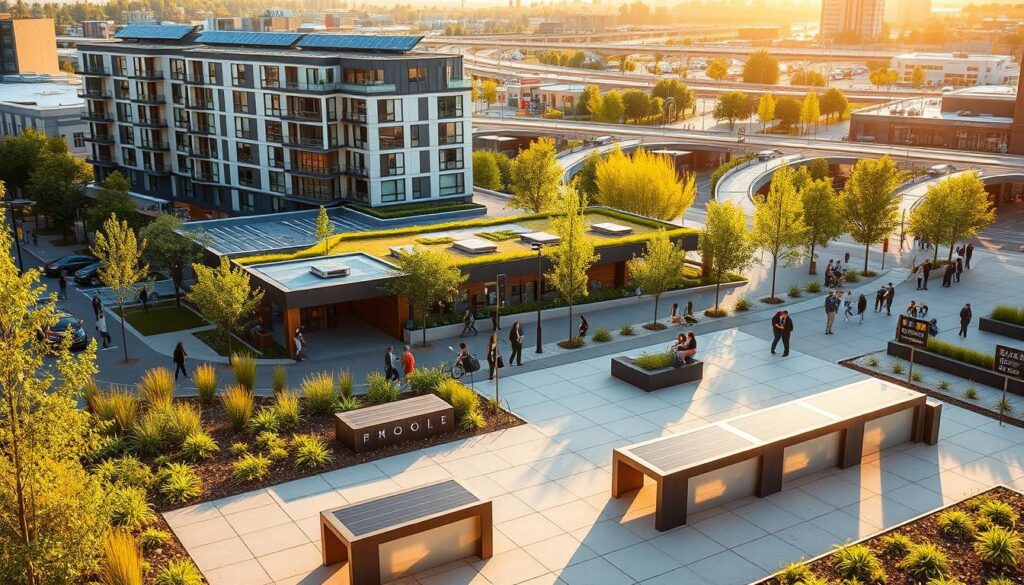
EcoDistricts in Portland is a shining example of successful community-focused engineering projects. This initiative has transformed the way urban development is approached, prioritizing sustainability and community involvement.
Concept and Implementation
The EcoDistricts concept in Portland was developed to promote sustainable and equitable urban development. The program focuses on creating vibrant, resilient neighborhoods through a collaborative approach involving local stakeholders, community groups, and city officials.
The implementation of EcoDistricts involved a comprehensive planning process that included setting clear sustainability goals, engaging with the community, and leveraging local resources. This approach has enabled Portland to create neighborhoods that are not only environmentally sustainable but also socially equitable.
Neighborhood Involvement
A key factor in the success of Portland’s EcoDistricts has been the high level of neighborhood involvement. Community members were actively engaged in the planning and development process, ensuring that the projects met the needs and aspirations of the local population.
Through a series of community workshops and public meetings, residents had the opportunity to contribute their ideas and feedback. This inclusive approach helped to build trust and foster a sense of ownership among community members.
Key Achievements
The EcoDistricts initiative in Portland has achieved significant environmental and social benefits. Some of the key achievements include reduced carbon emissions, improved air and water quality, and the creation of green spaces and public amenities.
| Achievement | Description | Impact |
|---|---|---|
| Reduced Carbon Emissions | Implementation of energy-efficient buildings and renewable energy sources | Significant reduction in carbon footprint |
| Improved Air and Water Quality | Green infrastructure and pollution reduction measures | Healthier environment for residents |
| Creation of Green Spaces | Development of parks and public gardens | Enhanced quality of life and biodiversity |
The success of Portland’s EcoDistricts serves as a model for other cities looking to implement community-centered engineering projects. By prioritizing sustainability, equity, and community involvement, Portland has created a more livable and resilient urban environment.
Challenges in Community-Centered Engineering
Community-centered engineering endeavors are not immune to challenges, including resistance to change and diverse stakeholder interests. These challenges can significantly impact the success of such projects.
Overcoming Resistance to Change
Resistance to change is a common challenge in community-centered engineering projects. Effective communication and inclusive decision-making processes are crucial in addressing this resistance. By engaging the community early and often, engineers can build trust and foster a sense of ownership among stakeholders.
For instance, in the case of the High Line in New York City, initial resistance from some community members was overcome through persistent outreach and by incorporating their feedback into the project’s design.
Balancing Diverse Interests
Community-centered engineering projects often involve balancing the diverse interests of various stakeholders. This can be particularly challenging when the needs and expectations of different groups conflict.
Stakeholder analysis and participatory planning are essential tools in managing these diverse interests. By identifying key stakeholders and understanding their needs, engineers can develop solutions that cater to the broader community’s needs while addressing the concerns of specific groups.
- Conduct thorough stakeholder analysis to understand diverse interests.
- Implement participatory planning to engage the community in decision-making.
- Foster transparent communication to build trust among stakeholders.
By adopting these strategies, community-centered engineering projects can navigate the challenges they face more effectively, leading to more successful and sustainable outcomes.
The Role of Technology in Enhancing Projects
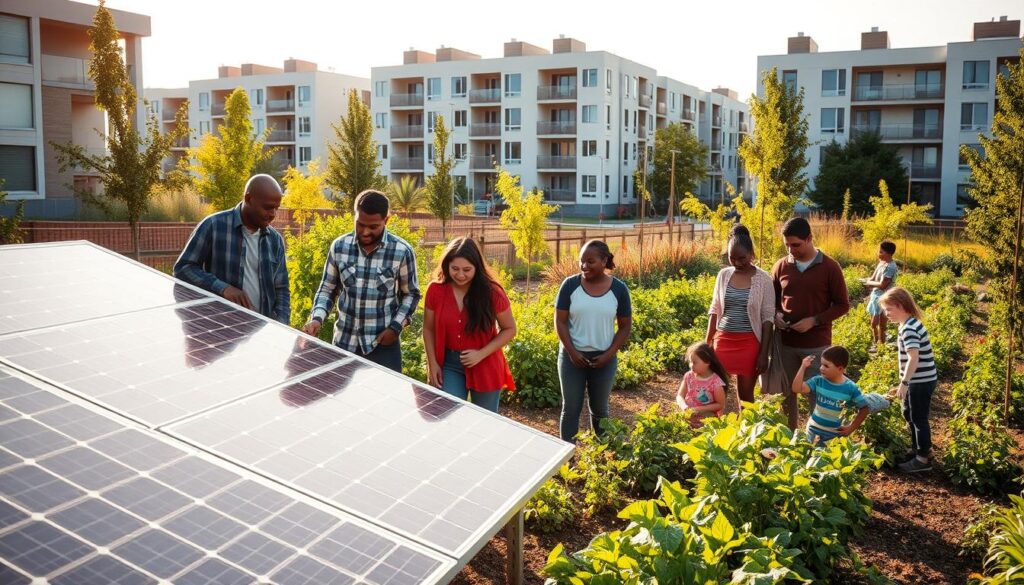
The integration of technology has transformed community-centered engineering projects, making them more efficient, inclusive, and sustainable. By leveraging cutting-edge tools and methodologies, engineers can now better understand community needs, design more effective solutions, and implement projects that have a lasting impact.
Innovative Tools for Community Input
One of the significant advancements in community-centered engineering is the development of innovative tools that facilitate community input. These tools range from digital platforms that allow residents to provide feedback on proposed projects to virtual reality (VR) technologies that enable stakeholders to visualize and interact with project designs in a more immersive way.
Digital Engagement Platforms have become increasingly popular, allowing communities to participate in the planning process remotely. These platforms can include online surveys, forums, and mapping tools that help identify community needs and preferences.
The use of Virtual Reality (VR) and Augmented Reality (AR) is also on the rise, providing a more engaging way to present project designs and gather feedback. These technologies can help bridge the gap between technical designs and community understanding, ensuring that all stakeholders are on the same page.
Data-Driven Decision Making
Data-driven decision making is another critical aspect where technology is making a significant impact. By collecting and analyzing data on community needs, project outcomes, and environmental impacts, engineers can make more informed decisions that are grounded in evidence.
| Data Type | Application | Benefit |
|---|---|---|
| Demographic Data | Understanding community needs | Tailored project designs |
| Environmental Data | Assessing project impacts | Sustainable project outcomes |
| Project Performance Data | Evaluating project success | Continuous improvement |
By embracing technology, community-centered engineering projects can achieve greater success, ensuring that they are not only innovative but also meet the needs of the communities they serve.
Future Trends in Community-Centered Engineering
The future of community-centered engineering is being shaped by innovative approaches that prioritize inclusivity and smart technology. As the field continues to evolve, it’s essential to understand the trends that will drive its growth.
Emphasis on Inclusivity and Accessibility
One of the significant trends in community-centered engineering is the emphasis on inclusivity and accessibility. This involves designing projects that are accessible to everyone, regardless of age or ability. For instance, incorporating ramps, elevators, and accessible restrooms in community buildings not only complies with regulations but also fosters a sense of belonging among all community members.
According to a study published on Frontiers in Education, inclusive design can significantly enhance community engagement and social cohesion.
Integration of Smart Technology
Another key trend is the integration of smart technology into community-centered engineering projects. Smart technology can enhance the efficiency, sustainability, and livability of communities. For example, smart grids can optimize energy distribution, while smart transportation systems can reduce congestion and pollution.
| Smart Technology | Application | Benefits |
|---|---|---|
| Smart Grids | Energy Distribution | Optimized energy use, reduced waste |
| Smart Transportation | Traffic Management | Reduced congestion, lower emissions |
| Smart Buildings | Building Management | Energy efficiency, enhanced comfort |
By embracing these trends, community-centered engineering can continue to create vibrant, sustainable, and inclusive communities that benefit everyone.
Best Practices for Success
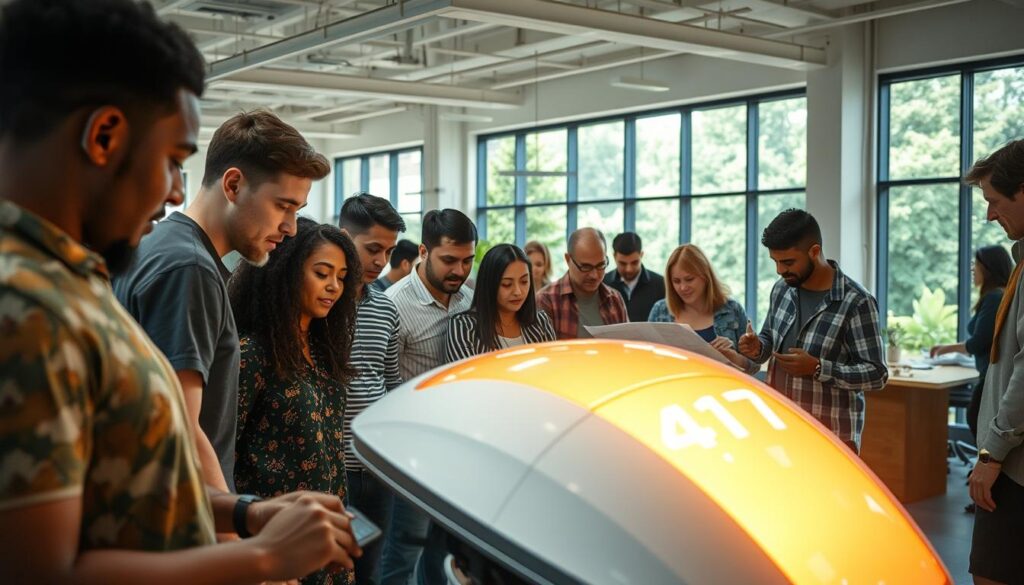
To achieve success in community-centered engineering, it is crucial to adopt best practices that prioritize community engagement and continuous feedback. This approach not only ensures that projects meet the actual needs of the community but also fosters a sense of ownership and cooperation among stakeholders.
Engaging with Diverse Communities
Engaging with diverse communities is a cornerstone of successful community-centered engineering projects. This involves understanding the unique needs, concerns, and aspirations of various community groups. By doing so, engineers can design solutions that are inclusive and beneficial to the community as a whole.
Effective community engagement can be achieved through various methods, including public meetings, surveys, and collaborative workshops. These platforms provide opportunities for community members to share their insights and feedback, thereby enriching the project design and implementation process.
Continuous Feedback Loops
Establishing continuous feedback loops is essential for the long-term success of community-centered engineering projects. This involves creating mechanisms for ongoing communication between the project team and the community, allowing for the identification and addressing of concerns in a timely manner.
Continuous feedback loops also enable project teams to adapt to changing community needs and preferences, ensuring that the project remains relevant and effective over time. This can be facilitated through regular community meetings, online feedback platforms, and other engagement tools.
The following table highlights key strategies for implementing best practices in community-centered engineering projects:
| Strategy | Description | Benefits |
|---|---|---|
| Community Outreach | Engage with community members through public meetings and surveys | Increased community buy-in and support |
| Collaborative Design | Involve community members in the design process through workshops | More relevant and effective project designs |
| Ongoing Feedback Mechanisms | Establish regular check-ins and online feedback platforms | Improved project adaptability and responsiveness to community needs |
Lessons Learned from Case Studies
A review of the presented case studies reveals essential lessons for community-centered engineering, highlighting the importance of adaptability and common themes.
Common Themes Across Projects
Several common themes emerge from the case studies examined, including the value of community engagement and the need for sustainable practices. These themes are crucial for the long-term success of community-centered engineering projects.
The case studies demonstrate that successful projects often involve collaboration with local stakeholders and the incorporation of local resources. This approach not only fosters a sense of community ownership but also ensures that the projects are tailored to the specific needs of the area.
Importance of Adaptability
Adaptability is a key lesson learned from the case studies. Community-centered engineering projects must be flexible to accommodate changing community needs and unforeseen challenges.
The ability to adapt is crucial in responding to unexpected obstacles and in capitalizing on new opportunities. By being adaptable, project leaders can ensure that their initiatives remain relevant and effective over time.
For instance, the High Line project in New York City adapted to community feedback by incorporating more green spaces and public art installations. This adaptability contributed to the project’s success and its ability to meet the evolving needs of the community.
Funding Sources for Community Projects
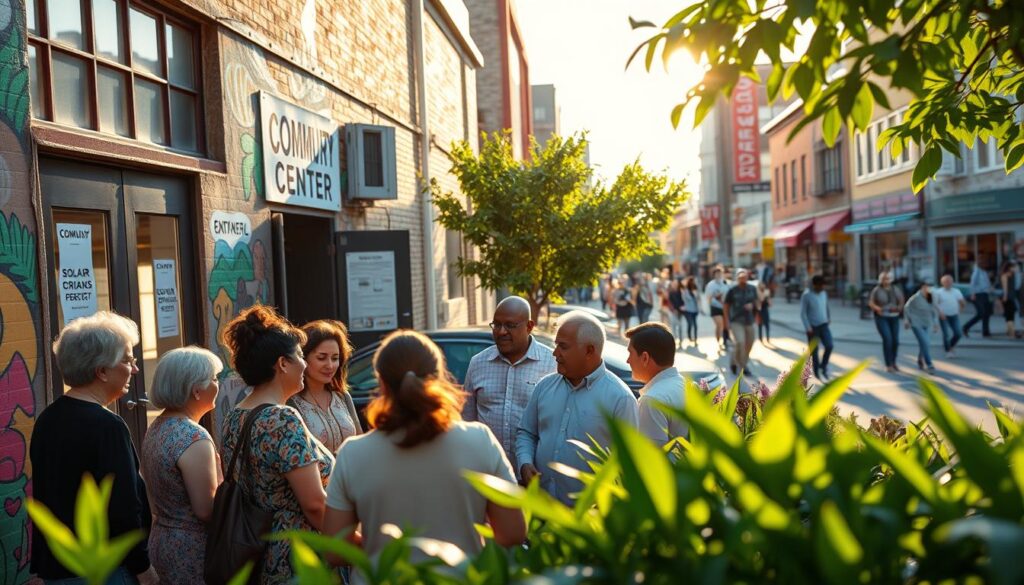
Community-centered engineering projects rely heavily on diverse funding sources to succeed. These projects often require significant financial backing to cover costs associated with planning, execution, and maintenance.
Government Grants and Support
Government grants play a crucial role in supporting community-centered engineering projects. These grants can be obtained from various federal, state, and local government agencies. For instance, the National Science Foundation (NSF) provides funding opportunities for engineering research centers through programs like the NSF Planning Grants for Engineering Research. Such grants enable projects to focus on innovative solutions that benefit the community.
Some key benefits of government grants include:
- Financial Support: Covering project costs, including materials, labor, and technology.
- Credibility: Government backing can enhance a project’s credibility, attracting additional funding and support.
- Guidance: Many government grants come with resources and expertise to help projects succeed.
Private Sector Collaboration
In addition to government grants, private sector collaboration is a vital funding source for community-centered engineering projects. Private companies can provide financial support, expertise, and resources that are crucial for project success.
Some ways private sector collaboration can benefit community projects include:
- Innovative Technologies: Private companies can bring cutting-edge technologies to the table, enhancing project outcomes.
- Financial Investment: Direct investment or sponsorship can help cover project costs.
- Expertise: Private sector professionals can offer valuable insights and guidance, improving project design and implementation.
By combining government grants and private sector collaboration, community-centered engineering projects can access the funding and resources needed to drive meaningful change and achieve their goals.
Profiles of Leading Community-Centered Engineers
Leading engineers are redefining community development through their commitment to inclusive and sustainable practices. These professionals are not only skilled in their field but also deeply invested in the communities they serve.
Notable Figures in the Field
One notable figure is Jane Smith, a renowned engineer known for her work on the Engineers Without Borders USA projects. Her dedication to community-centered engineering has inspired a new generation of engineers.
Another influential engineer is John Doe, who has been instrumental in designing sustainable infrastructure for underserved communities. His work has been recognized globally for its innovative approach to community development.
Their Impact on Communities
The impact of these engineers on their communities is multifaceted. They have not only contributed to the development of sustainable infrastructure but have also fostered a sense of community and cooperation.
| Engineer | Project | Impact |
|---|---|---|
| Jane Smith | Water Conservation Project | Improved water quality for 10,000 residents |
| John Doe | Sustainable Infrastructure Design | Reduced carbon footprint by 30% |
These community-centered engineers are making a significant difference in the lives of people around the world. Their work serves as a testament to the power of engineering to drive positive change.
Measuring Success in Community Projects

The success of community-driven projects hinges on the ability to measure their outcomes accurately. Effective measurement involves using a combination of metrics and evaluation techniques to assess the impact of these projects.
Metrics and Evaluation Techniques
To evaluate the success of community-centered engineering projects, various metrics can be employed. These include quantitative measures such as the number of people served, economic benefits, and environmental impact. Qualitative measures, such as community satisfaction and project sustainability, are also crucial. Studies have shown that a balanced approach using both types of metrics provides a comprehensive understanding of a project’s success.
Key Metrics for Evaluation:
- Economic benefits
- Environmental impact
- Community satisfaction
- Project sustainability
For instance, the success of engineering projects can be measured by their ability to meet community needs while minimizing environmental footprint.
| Metric | Description | Example |
|---|---|---|
| Economic Benefits | Job creation and local economic growth | A community center that creates jobs and stimulates local spending |
| Environmental Impact | Reduction in carbon footprint and sustainable practices | A green building project that reduces energy consumption |
| Community Satisfaction | Level of community engagement and satisfaction | A public park that becomes a hub for community activities |
Long-term Impact Assessment
Assessing the long-term impact of community-centered engineering projects is vital for understanding their sustainability and effectiveness over time. This involves monitoring the projects post-implementation to ensure they continue to meet community needs and adapt to changing circumstances.
Long-term impact assessment can reveal valuable insights into the durability and relevance of engineering projects. For example, a project that was initially deemed successful might face challenges over time, such as maintenance issues or changing community needs.
By continuously evaluating and adapting these projects, engineers can ensure that they remain relevant and beneficial to the community. This not only enhances the project’s longevity but also contributes to the overall success of community-centered engineering initiatives.
Conclusion: The Future of Community-Centered Engineering
As we’ve explored throughout this article, community-centered engineering is transforming the way infrastructure projects are designed and implemented. By prioritizing collaboration, sustainability, and community needs, engineers can create innovative solutions that drive positive change.
Leading companies like AECOM, Bechtel Corporation, and Jacobs Engineering Group are already making significant contributions to successful community-driven projects. For more information on notable civil engineering companies, visit World Civil Society.
New Opportunities Ahead
The future of community-centered engineering holds much promise, with emerging technologies and innovative approaches enabling even more effective collaboration between engineers and communities.
Call to Action
As we move forward, it’s essential for engineers, communities, and stakeholders to continue working together to create a brighter future through community-centered engineering. By doing so, we can deliver successful community-driven projects that improve the quality of life for generations to come.
